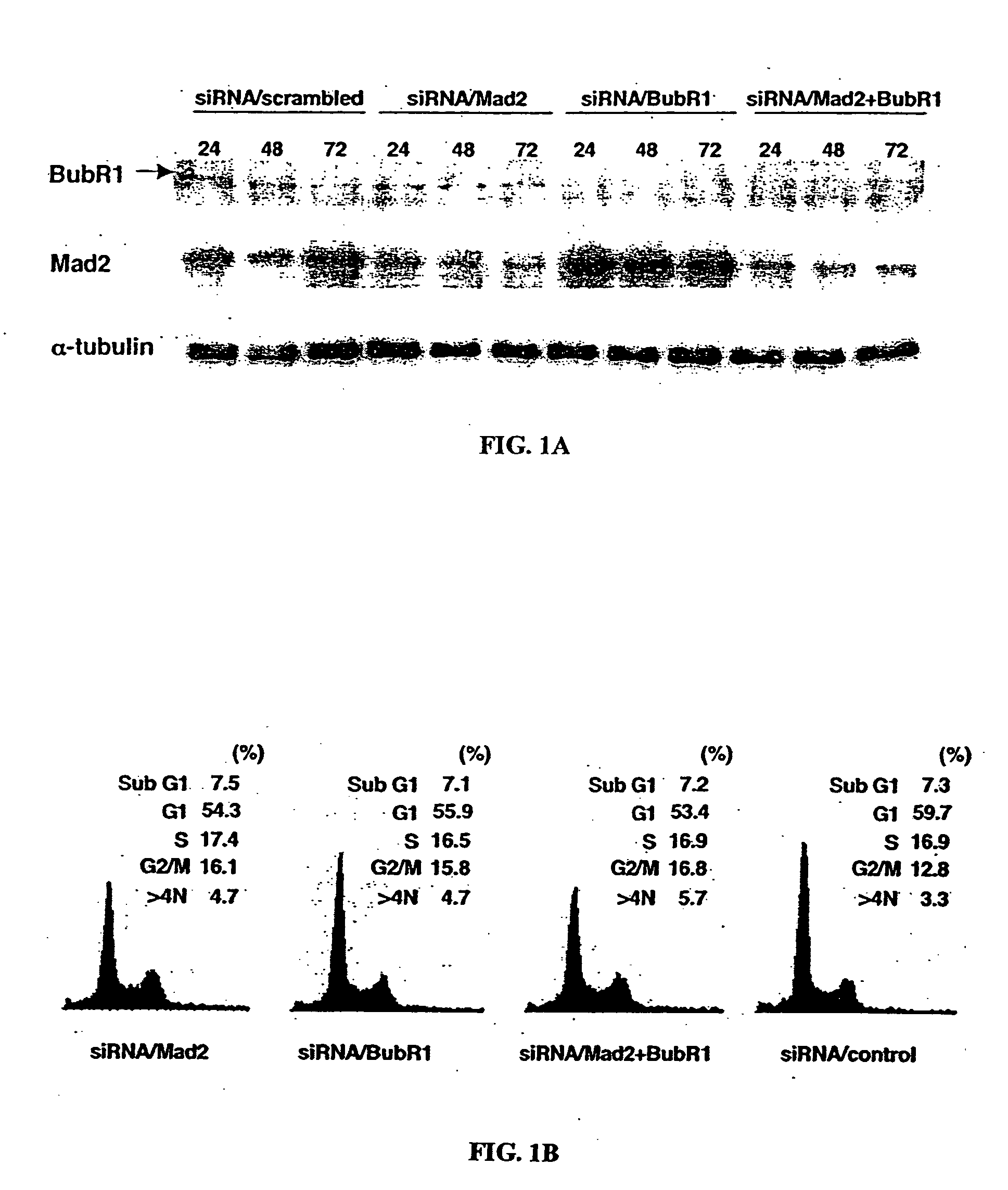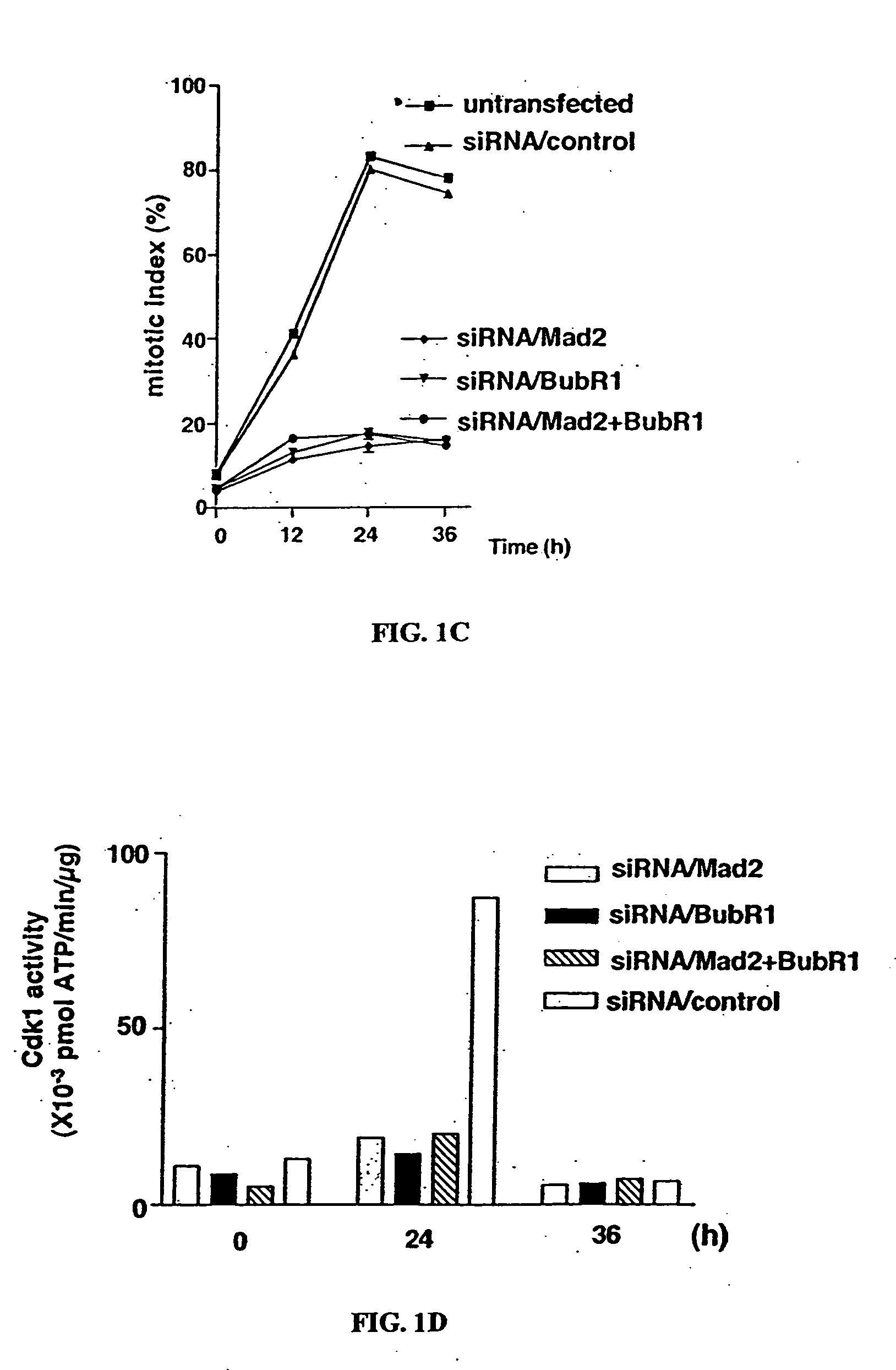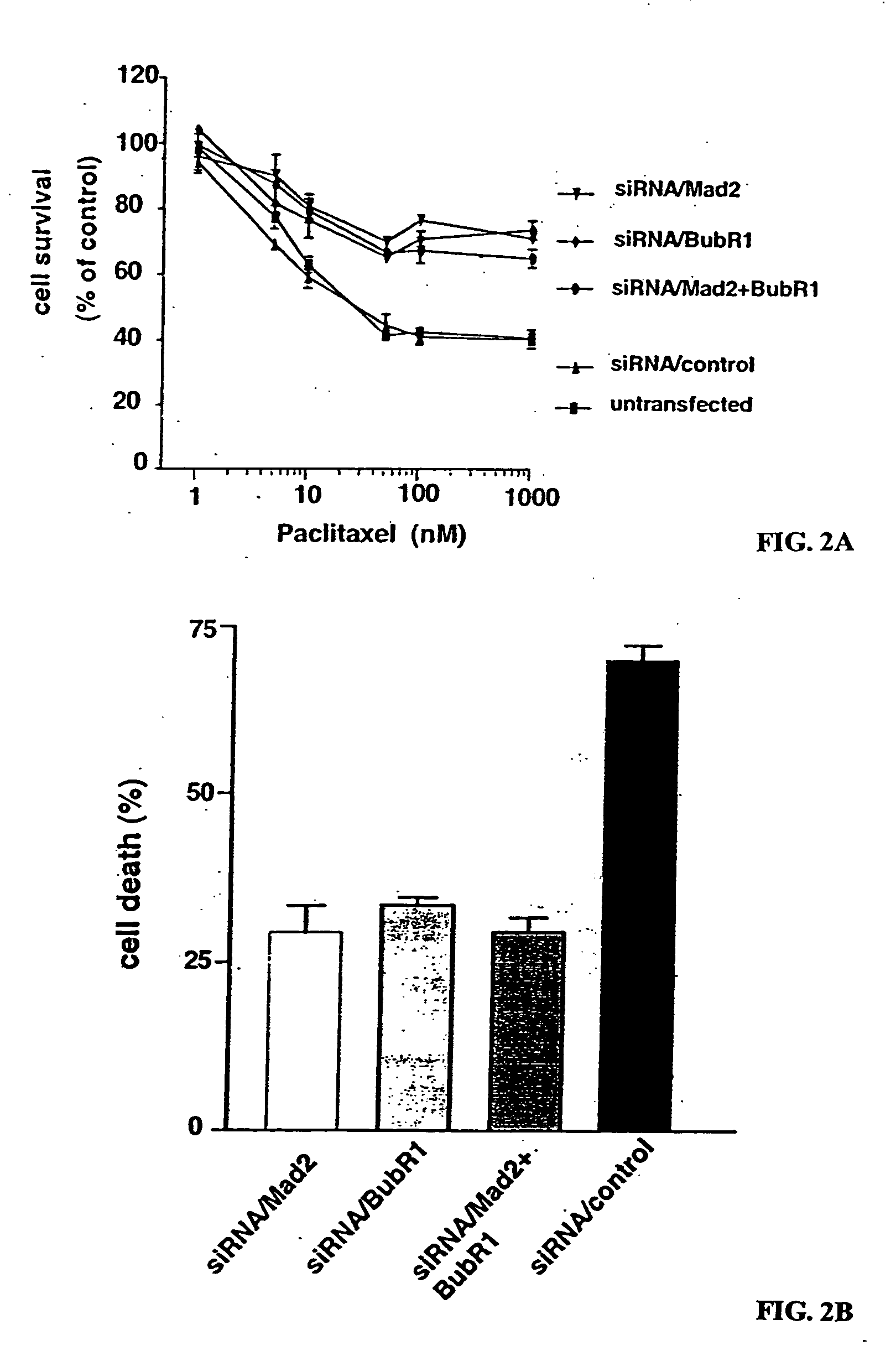Taxane chemosensitivity prediction test
- Summary
- Abstract
- Description
- Claims
- Application Information
AI Technical Summary
Benefits of technology
Problems solved by technology
Method used
Image
Examples
example 1
Experimental Procedures
[0129] Cell lines and cell culture. All human cell lines used in this study-HEK 293 cells, for development of the recombinant plasmid; MCF-7 breast cancer and MCF-10A normal mammary cells, which are known to have a functional spindle assembly checkpoint; and T47D breast cancer and Ovca432 ovarian cancer cells, which have a defective checkpoint owing to low Mad2 expression-were obtained from the American Type Culture Collection (Rockville, Md.). HEK 293 cells, MCF-7 cells, and T47D cells were grown in Dulbecco's modified Eagle's medium (DMEM) / F12 medium. Ovca432 cells were maintained in RPMI 1640. Both DMEM / F12 medium and RPMI 1640 were supplemented with 2 mM L-glutamine, 10% fetal bovine serum (FBS; 100 IU / ml), and penicillin-streptomycin (100 mg / ml). MCF-10A cells were maintained in DMEM / F12 medium supplemented with 5% horse serum, 0.02 μml epidermal growth factor, 0.5 μg / ml hydrocortisone, 10 μg / ml insulin, 0.1 μg / ml cholera toxin, 100 IU / ml penicillin, and...
example 2
Inactivation of Spindle Assembly Checkpoint and Correlation with Suppression of Cdk1 Activity
[0140] Previous studies have shown that upon activation of the spindle assembly checkpoint, both Mad2 and BubR1 interact with Cdc20 directly and inhibit its ability to activate APC (Fang et al., 1998; Sudakin et al., 2001; Tang et al., 2001; Fang, 2002). To determine whether suppression of Mad2 or BubR1 through transient knockdown in cell lines would affect the function of the spindle assembly checkpoint induced by paclitaxel, we performed gene silencing using siRNA duplexes.
[0141] Transfection of MCF-7 cells, which have a functional checkpoint, with the 21-nucleotide small interfering RNA (siRNA) duplex homologous to a portion of the Mad2 and BubR1 sequences resulted in dramatic reduction of Mad2 and BubR1 protein levels; these levels remained low at 24, 48, and 72 hr after transfection in each cell line. Co-transfection of MCF-7 cells with siRNA / Mad2 and siRNA / BubR1 also reduced both exp...
example 3
Loss of Spindle Assembly Checkpoint and Paclitaxel Resistance
[0144] To determine the effect of loss of spindle assembly checkpoint due to suppression of Mad2, BubR1, or both on paclitaxel sensitivity, the cell viability of paclitaxel using the MTT assay was compared. As shown in FIG. 2A, MCF-7 cells in which Mad2, BubR1, or both were suppressed, were more resistant to paclitaxel than control cells. Next, to determine whether these resistances were due to the reduction of cell death induced by paclitaxel, the inventors assessed the population of cell death using trypan blue exclusion. Forty-eight hr after treatment with paclitaxel, levels of cell death were high in control cells but reduced in the cells in which Mad2, BubR1 , or both were suppressed (FIG. 2B). These data demonstrate that loss of the spindle assembly checkpoint increases paclitaxel resistance.
PUM
| Property | Measurement | Unit |
|---|---|---|
| Time | aaaaa | aaaaa |
| Sensitivity | aaaaa | aaaaa |
| Level | aaaaa | aaaaa |
Abstract
Description
Claims
Application Information
 Login to View More
Login to View More - R&D Engineer
- R&D Manager
- IP Professional
- Industry Leading Data Capabilities
- Powerful AI technology
- Patent DNA Extraction
Browse by: Latest US Patents, China's latest patents, Technical Efficacy Thesaurus, Application Domain, Technology Topic, Popular Technical Reports.
© 2024 PatSnap. All rights reserved.Legal|Privacy policy|Modern Slavery Act Transparency Statement|Sitemap|About US| Contact US: help@patsnap.com










